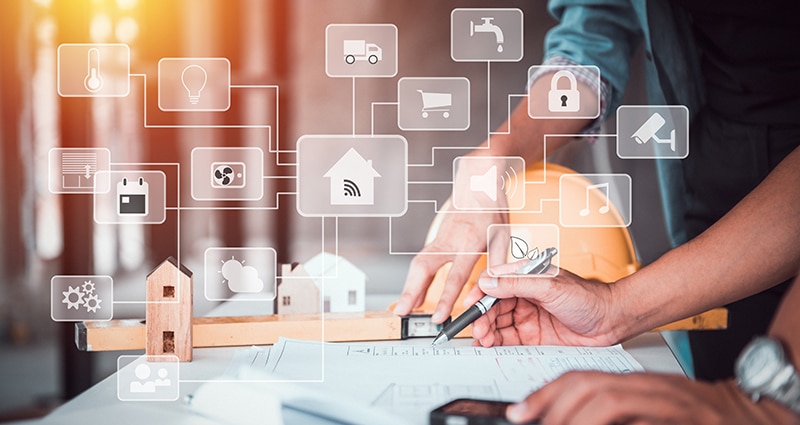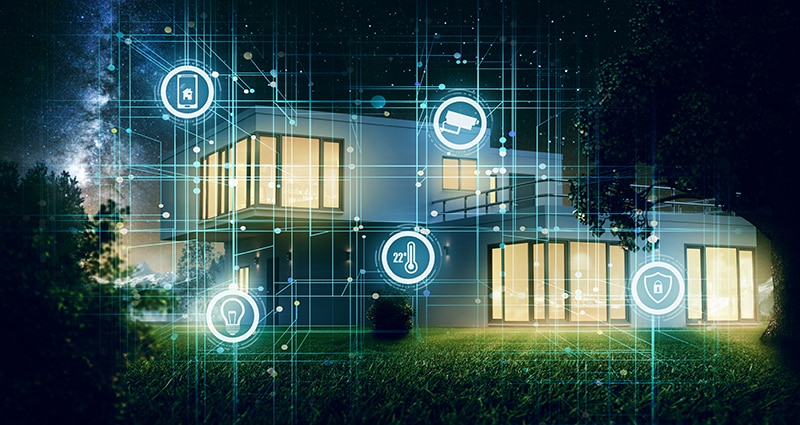The Tech Foundation of Smart City Infrastructure
An overview of the key technologies that will enable smarter, more sustainable, and more convenient cities
This is a summary of the first article of a five-part series about the technologies that enable IoT. The full article can be viewed at wevolver.com.
What is a smart city?

A smart city is composed of smart objects that are interconnected and connected to the cloud, working together as part of an IoT (Internet of Things) network to create more efficient, sustainable, and convenient city living. Smart cities are also expected to tackle urgent social issues including, increasing urban population, excessive energy consumption, road safety, and more. The goals of the smart city, efficiency, safety, and sustainability, are intended for economic, social, and environmental sustainability.
The first attempts at smart cities make use of interconnected networks, such as smart grids to increase energy efficiency, sensing and monitoring technology for intelligent traffic management and pollution monitoring, enhanced computing and data storage, and digital IDs for improved access to services.
What is the technology behind it?
At the core of the smart city is an interconnected network collecting and sharing data. This network must not only work non-stop but simultaneously has to fulfill high requirements of connectivity, bandwidth, and processing power, while being able to work at very low power. For this reason, the key technology for the IoT devices essential to smart cities is semiconductor technology.
Semiconductor technology is used for chips and hardware components inside smart objects, especially smart sensors and monitoring technology. Processors in an IoT device such as MCUs (microcontrollers) have to be embedded with software, which is what allows devices to sense data, process it, and communicate with the network. Due to the network mostly being connected to the internet, a large part of developing an IoT system consists of enabling devices with high-performance connectivity options, such as 5G, LTE, WiFi, and Bluetooth.
The infrastructure of the smart city
Smart grid
A smart grid is a fully interconnected power system functioning at high energy-efficiency levels and supplying the entire infrastructure of the smart city. Smart metering technology enhances grid reliability by monitoring and regulating power supplies.
Smart meters
Smart meters are intelligent electronic devices that record data on electricity, water, and natural gas usage. A two-way communication system enables service providers and suppliers to collect information on consumption and monitor the energy patterns of customers.
EV charging stations and smart parking
EV charging stations supply EVs with electricity from the grid. Although EVs are equipped with an AC/DC converter for domestic charging, plug-in charging stations supply DC directly for fast charging.
Distributed energy systems (DES)
Smart grids promote the switch from a centralized model that sees energy flowing from a power plant to the consumer, to a model of distributed renewable energy generation and direct consumer engagement. Domestic and public solar panels, wind turbines, biomass generators, hydro, geothermal, and hybrid power sources, as well as EV chargers and smart homes, can all contribute to powering the grid by generating or storing electricity.
Smart monitoring and sensors
The smart city relies on the use of smart technology to elaborate and act upon data collected from the environment. Data is collected via the use of sensing technology as well as smart cameras. Sensor technologies need to function at very low power to extend battery life and can exploit heat, radar, lidar, proximity, chemical detection, and sunlight.
Traffic and pollution management
Sensors for traffic management use millimeter wave (mmW) radar to collect data, communicate wirelessly across the network, and feed real-time data back into the traffic system. This opens up a range of applications such as accident prevention, traffic regulation, and rerouting vehicles towards less-trafficked zones.
Smart Cameras
Video surveillance is also part of the system, both for maintenance purposes and overall control and safety. The issue of permanent surveillance remains one of the most discussed, as it borders on questions of ethical importance such as data security and privacy.
Edge computing and gateways
The large amounts of data collected by semiconductor sensors and monitoring technology needs to be stored and processed. Gateways store the data collected, elaborate and select them, and send back sensitive data to the system to apply corrective measures. Data is processed according to a model of a local distribution network of nodes known as “edge computing”. By elaborating on the data close to the source of their collection, the network is able to process large amounts of data shared in real-time.
Digital IDs and other technologies
Digital IDs will be an integral part of the Smart City system. Citizens will be able to connect to government services directly and use their Digital IDs to engage with the network, i.e. accessing public transport, making transactions, reserving parking spots or planning routes, and confirming their identities.
Conclusion
As the technologies to achieve an autonomous, intelligent, and interconnected IoT network continue to improve, the design of the city of the future begins to take a more definite shape. Citizens worldwide will interact more and more with IoT systems as they become integrated into both future and retrofitting city planning. The prospect is a less wasteful, more energy-efficient, convenient, and safer city. However, challenges still lay ahead in both the roadmap to these technologies and the cultural and societal adoption.
The full article can be viewed at wevolver.com.

Have questions or comments? Continue the conversation on TechForum, DigiKey's online community and technical resource.
Visit TechForum







